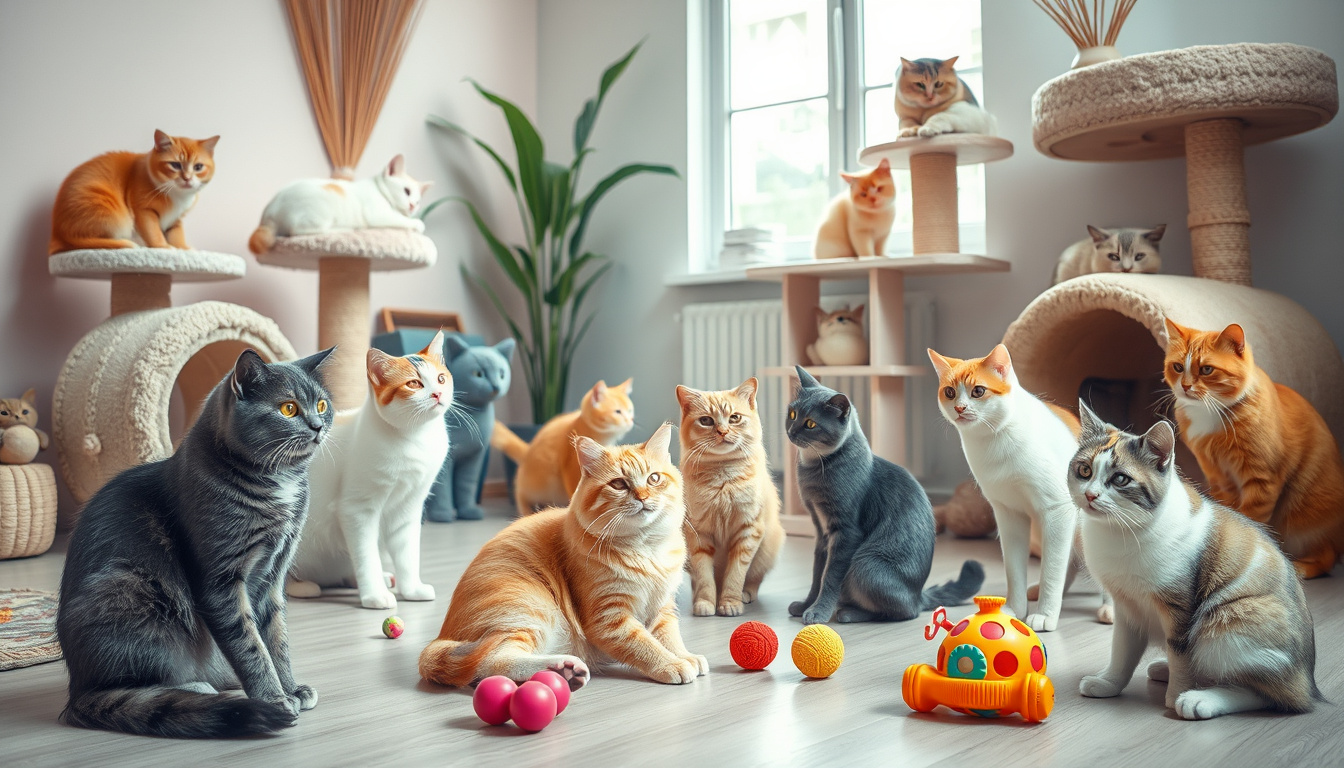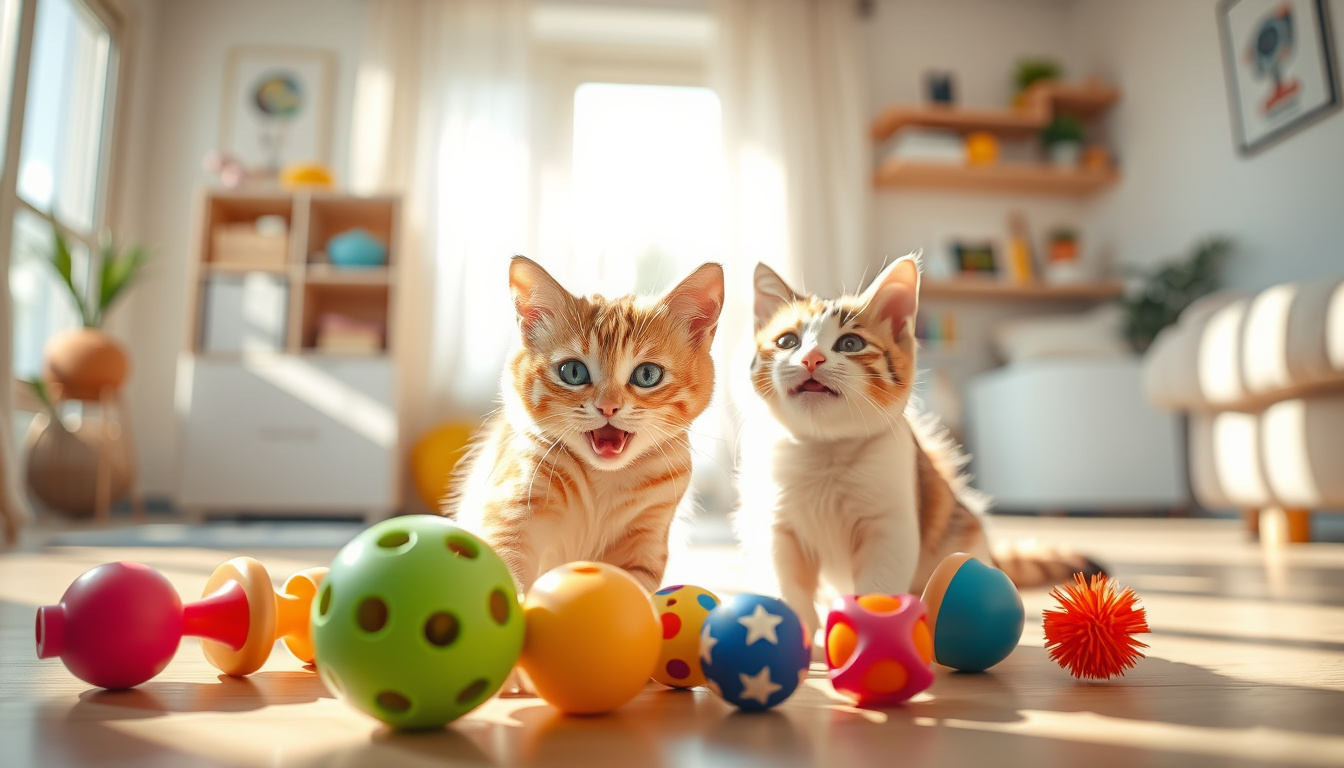Cats are often seen as independent and mysterious creatures, leading many cat owners to wonder about their behaviors and needs.
In this ultimate guide to understanding your cats, we will unpack the intricate ways in which these charming companions communicate with us, provide essential tips for keeping them happy and healthy, debunk common myths, explore engaging tricks to teach them, and highlight the importance of playtime with interactive toys.
Whether you're a seasoned cat owner or a new adopter, this comprehensive guide will help you deepen your bond with your feline friend and enhance their overall well-being.
my pet wellness app
Key Takeaways
- Cats communicate through body language and vocalizations, which can be interpreted to understand their feelings better.
- Providing regular playtime and interactive toys is crucial for a cat's mental and physical well-being.
- Many common myths about cats, such as their independence meaning they don't need affection, are indeed misconceptions.
- Training your cat with simple tricks can enhance your bond and keep them mentally stimulated.
- Essential care practices, like proper diet and regular vet visits, are key to keeping your cat healthy and happy.
Understanding Cat Behavior: What Your Feline Friend is Telling You
Understanding cat behavior is essential for any cat owner looking to deepen their bond with their feline friend.
Cats, known for their independent nature, communicate in subtle ways that often confuse their human companions.
For instance, when your cat kneads on you with their paws, it’s not just a random act; this behavior is rooted in their kittenhood, where kneading assured comfort and warmth from their mother.
Tail positions, purring, and even how they blink at you can all indicate their mood and desires.
For example, a raised tail typically means they are happy to see you, while a slow blink can signify trust and affection.
By paying attention to these signals, you can foster a more harmonious relationship with your cats, ensuring their needs are met and their quirks are appreciated.
Learning about these behaviors not only helps you interpret their actions but also enhances your understanding of their health and happiness.
Essential Tips for Care: Keeping Your Cat Happy and Healthy
Caring for your feline friend is a rewarding journey that combines love, attention, and understanding of your cat's unique needs.
To keep your cats happy and healthy, start with a balanced diet tailored to their age, breed, and health conditions; high-quality cat food packed with nutrients is crucial.
Regular veterinary check-ups not only help in preventing diseases but also keep you informed about your cat's health status.
Engage your cats with interactive toys and regular playtime to stimulate their minds and bodies, reducing the risk of obesity and behavioral issues.
Litter box hygiene is another essential aspect; ensure it is clean and located in a quiet, accessible place.
Lastly, provide plenty of scratching posts and cozy resting spots to fulfill your cat's natural instincts.
By following these essential tips, you can create a nurturing environment that enhances your cats' well-being and strengthens your bond with them.
'Cats are connoisseurs of comfort.' – James Herriotmy pet wellness app

Common Myths About Cats: Setting the Record Straight
Cats have long been the subject of countless myths and misconceptions, often leading to misunderstandings about these beloved companions.
One common myth is that cats are aloof and don't form strong bonds with their owners.
In reality, cats can be incredibly affectionate, seeking out human companionship and showing their love through purring, head-butting, and sitting on laps.
Another myth suggests that cats always land on their feet, while they are indeed agile creatures capable of impressive feats, falls from significant heights can seriously injure them.
Additionally, many believe that cats are strictly solitary animals, but they can thrive well in multi-pet households and often enjoy playful interactions with other animals.
Lastly, there's the notion that cats can't be trained; however, with patience and positive reinforcement, cats can learn various commands and tricks.
Understanding these myths about cats not only helps in fostering a better relationship with them but also enhances our appreciation of their unique personalities.
Fun Tricks to Teach Your Cat: Engaging Activities for Bonding
Teaching your cat fun tricks is not only an entertaining way to engage your feline friend, but it also fosters a stronger bond between you both.
While many people might think cats are less trainable than dogs, cats are actually intelligent creatures that can learn a variety of behaviors with patience and positive reinforcement.
Start with simple tricks such as 'high five' or 'jump through a hoop' to get your cat used to the idea of training.
Use treats as a reward to encourage your cat's participation and make the learning experience enjoyable.
Incorporate playtime into your routine by using toys that stimulate your cat's natural hunting instincts while simultaneously encouraging them to perform tricks.
By dedicating time to teach your cats these engaging activities, you'll not only enhance their mental agility but also create cherished moments, transforming training into a rewarding experience for both of you.

The Importance of Play: How Interactive Toys Enhance Your Cat's Life
Cats are naturally curious creatures, and providing them with interactive toys can significantly enhance their quality of life.
The importance of play for cats cannot be overstated, as it plays a vital role in their physical and mental well-being.
Engaging with interactive toys stimulates their hunting instincts, encourages exercise, and helps alleviate boredom, which can lead to behavioral issues.
Toys that require your cat to think and problem-solve not only provide entertainment but also strengthen the bond between you and your feline friend.
Whether it’s a feather wand, a laser pointer, or puzzle feeders, each toy serves a purpose!
Incorporating interactive playtime into your cat's daily routine is essential for maintaining their overall health and happiness, making it an invaluable aspect of responsible pet ownership.
Frequently Asked Questions
What are some common signs of a happy cat?
A happy cat often exhibits behaviors such as purring, kneading, a relaxed body posture, and slow blinking.
They may also show affection through head-butting or following you around.
How can I tell if my cat is unwell?
Signs that your cat may be unwell include changes in appetite, lethargy, hiding, litter box issues, excessive grooming or neglecting grooming, and changes in vocalization.
If you notice these signs, it's best to consult a veterinarian.
What are some myths about cats that I should be aware of?
Some common myths include the belief that cats always land on their feet, that they don't need companionship, and that they can't be trained.
In reality, while cats are agile, they can be hurt from falls, they often enjoy social interaction, and they can be trained to follow commands or perform tricks.
What types of interactive toys are best for my cat?
Interactive toys that stimulate your cat's hunting instincts are ideal.
Examples include feather wands, laser pointers, treat-dispensing puzzles, and battery-operated toys that mimic prey movements.
How can I strengthen the bond with my cat?
Strengthening the bond with your cat can be achieved by spending quality time together through play, grooming, and creating a calm, safe environment.
Regularly engaging in activities they enjoy will also build trust and connection.
George Hokett, 607-481-7217, mindfulaimedia@gmail.com

No comments:
Post a Comment